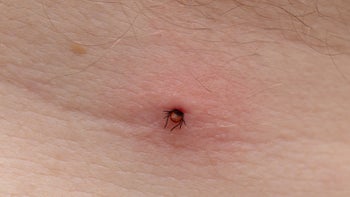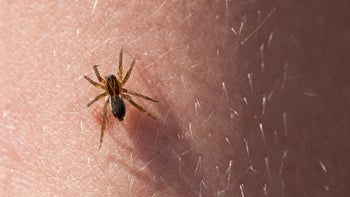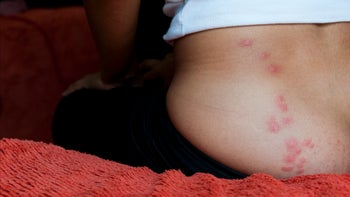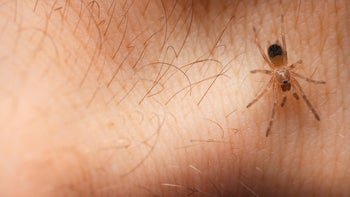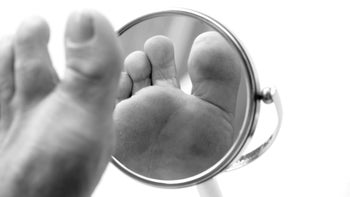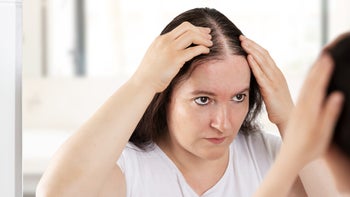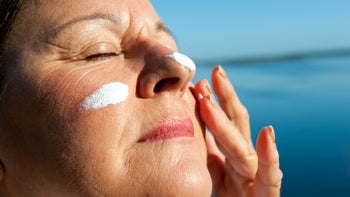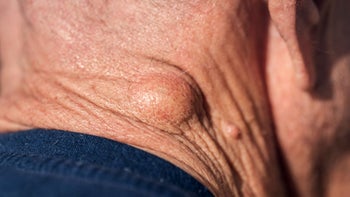
Can Honey Help Your Skin? Yes. Here Are 3 Science-Backed Benefits
Key takeaways:
Honey has anti-inflammatory, antibacterial, and antifungal properties that may provide benefits for your skin. Research suggests that honey can help with wound healing, hydration, and acne.
There are different ways to incorporate honey into your skin care routine. You can try “do-it-yourself” methods at home, like applying honey as a mask or mixing it with your moisturizer. Or you can purchase skin care products that contain honey.
The type of honey you choose impacts its effectiveness on your skin. Avoid processed honey and instead look for raw honey, or varieties like Manuka, Kanuka, or acacia.
Table of contents

Honey is more than just a sweet treat. Many say that it makes their skin clearer and more hydrated, and some research supports these anecdotal claims.
Because of this, honey is often added to skin care products and cosmetics. But you can also use honey on your skin straight from the jar. Keep reading to learn about honey’s many benefits for skin health, how to incorporate it into your skin care routine, and the best kinds of honey to try.
Is honey good for your skin?
The short answer is yes — honey is good for your skin. It’s highly moisturizing, helping to soften your skin and prevent water loss. Honey is also rich in vitamins, enzymes, and antioxidants.
Search and compare options
These compounds make honey:
Antibacterial
Anti-inflammatory
Antifungal
Antiviral
Evidence-backed honey benefits for skin
On social media, there’s no shortage of people sharing about their use of honey in their skin care routines. Users claim all kinds of results, from improved skin tone and smoother texture to fewer visible wrinkles. That said, research supports three main benefits of honey for your skin.
1. Wound healing
One of the most studied honey benefits for your skin is its ability to help with wound healing. In fact, honey is the oldest known wound-healing agent. Because of its medicinal properties, people have been using honey on their skin since ancient times.
Honey helps wounds heal by:
Triggering cytokine release: Cytokines are small proteins released by white blood cells. They tell your immune system to start repairing tissue and build new skin around your wound.
Forming a protective barrier: This barrier keeps your skin moist, which can help speed up healing.
Reducing inflammation and pain: Honey’s anti-inflammatory properties can ease discomfort.
Reducing the risk of wound infections: Its antibacterial, antifungal, and antiviral properties help stop the growth of harmful bacteria and fungi.
Is moisturizer off-limits if you have acne? Not at all. Using a moisturizer is important, even if you have oily or acne-prone skin. Here’s the best kind to choose.
How often should you exfoliate your face? Every person is different, but for most, exfoliating one to three times per week is the right amount. Start slowly and increase frequency as your skin adjusts.
Foods and drinks for glowing skin: Did you know the nutrients found in certain foods and drinks may help keep your skin healthier and more youthful-looking?
Honey may also improve the appearance of scars after an injury or incision.
2. Hydration
Honey is well-regarded for its ability to keep your skin moisturized. It’s classified as an emollient, the official term for an ingredient that moisturizes and softens the skin. It’s also a humectant, a substance that attracts and holds onto water to help keep your skin hydrated.
While several compounds in honey are thought to contribute to hydration, research suggests that the sugars in honey form a protective layer on your skin, helping prevent water loss.
Read more like this
Explore these related articles, suggested for readers like you.
Well-hydrated skin appears smoother, plumper, and has better elasticity. Hydration also promotes a healthy skin barrier — the outermost layer of your skin that shields you from environmental pollutants and toxins. When your skin is dehydrated, the skin barrier gets damaged and doesn’t function as well. By keeping your skin barrier hydrated, honey helps it perform its protective role.
3. Acne Reduction
Honey’s antibacterial and anti-inflammatory properties may help reduce acne.
While acne usually develops due to excess oil production, it’s made worse by bacteria called Cutibacterium acnes (C. acnes). Inflammation associated with acne can cause redness, swelling, and soreness in pimples and pustules (pus-filled pimples).
Applying honey to the affected area can help reduce the bacteria that make acne worse. It can also calm inflammation, reducing any redness and puffiness surrounding pimples.
What skin conditions can honey help treat?
Because of its anti-inflammatory and antimicrobial properties, some research suggests that honey may be an effective treatment for certain skin conditions. There isn’t a wide body of research to back up these uses. But some evidence shows that applying honey to the affected area may help improve:
Eczema (atopic dermatitis): A chronic inflammatory skin condition that causes dry, cracked, thickened, and/or scaly skin
Psoriasis: An autoimmune condition that can lead to thick, painful, or itchy rashes on your body
Dandruff (seborrheic dermatitis) and dry scalp: A condition that causes white or yellow flakes on your scalp and itchy skin.
Rosacea: An inflammatory skin condition that causes redness, visible blood vessels, and bumps on your face.
If you have any of these skin conditions, talk to your dermatologist about the best treatment options for you. If they recommend using honey on your skin, it’ll likely be in combination with other treatments.
How do you use honey in your skin care routine?
If you’re interested in adding honey to your skin care routine, here are some simple ways to do it yourself:
Apply honey directly to your skin. After cleansing, while your skin is still damp, spread a thin layer of honey on your skin like a mask. Leave it on for 15-20 minutes, then rinse. You can try mixing the honey with other beneficial ingredients like turmeric, which has also been shown to reduce skin inflammation and protect your skin barrier.
Use honey as an exfoliating scrub. Mix 1 tbsp of honey with 1 tsp of brown sugar. Gently massage it onto clean skin, then rinse with warm water. You can use this on your face, lips, and body.
Mix honey into a cream or ointment. As part of your nighttime routine, add a few drops of honey to a moisturizing cream or ointment, like Aquaphor. Mix thoroughly and apply the cream as you normally would. If the combination feels too sticky for widespread use, apply it as a spot treatment on affected areas.
Use honey as a wound dressing. You can apply honey to gauze and cover wounds with it. For serious wounds, make sure you check in with a healthcare professional — honey isn’t a replacement for proper medical treatment.
You can also look for skin care products that contain honey. Check the label and make sure honey is listed near the top of the ingredient list. This ensures that there’s actually a decent concentration of honey in the product. Ingredients are listed by weight, so if honey is farther down, the product likely doesn’t contain enough honey to provide health benefits.
What type of honey is best for skin care?
There are several types of honey available on your grocery store shelf, but not all of them offer health benefits. Much of the honey that you find at the supermarket is processed. Often, processed honey is stripped of its beneficial compounds during manufacturing. Some processed honeys combine a small amount of real honey with less expensive sugars and syrups, which don’t provide any therapeutic benefits.
The best types of honey for skin care are:
Manuka honey: This dark honey from New Zealand is rich in antioxidants and known for its antimicrobial properties.
Kanuka honey: The cousin to Manuka honey, Kanuka honey is another nutrient-rich option native to New Zealand. It’s not as common as Manuka honey, but it’s often used in studies for skin disorders like eczema and psoriasis.
Acacia honey: Made by bees that feed on acacia flowers, this honey is rich in vitamins, antioxidants, and fatty acids. Several studies linking honey to skin benefits have used acacia honey.
Raw honey: This refers to honey that has been filtered before bottling but hasn’t undergone additional processing. Raw honey is richer in beneficial compounds than processed honey. You can usually find it labeled as “raw honey” at standard supermarkets. You may even already have some in your pantry.
Who should try honey for skin health?
Honey can be beneficial for all skin types, but it may be especially helpful for:
Dry skin
Maturing skin
Acne-prone skin
However, some people may want to avoid using honey on their skin or take extra precautions, including:
People with bee or pollen allergies: Honey-specific allergies are rare. But people who are severely allergic to bee stings or pollen may experience a reaction when using honey. This risk can increase with raw, unfiltered honeys or those containing parts of the honeycomb. If you have an allergy, talk to a healthcare professional before applying honey to your skin.
People with sensitive skin: If you have sensitive skin, honey may cause redness or irritation. To test for a reaction, apply a small amount of honey to a patch of skin (like behind or underneath your ear, which is similar to your face). Wait 24 hours to see how you react before using it all over your face or body.
The bottom line
Honey contains many beneficial compounds that may make it a good addition to your skin care routine. It can keep your skin moisturized and reduce the appearance of acne. It can also aid in wound healing. But it’s important to choose unprocessed honey. Raw and Manuka honey are two of the types that are usually easy to find.
Why trust our experts?



References
Alangari, A. A., et al. (2017). Honey is potentially effective in the treatment of atopic dermatitis: Clinical and mechanistic studies. Immunity, Inflammation And Disease.
Al-Waili 1, N. S., et al. (2001). Therapeutic and prophylactic effects of crude honey on chronic seborrheic dermatitis and dandruff. European Journal Of Medical Research.
Braithwaite, I., et al. (2015). Randomised controlled trial of topical kanuka honey for the treatment of rosacea. BMJ Open.
Burlando, B., et al. (2013). Honey in dermatology and skin care: A review. Journal Of Cosmetic Dermatology.
Fingleton, J., et al. (2014). A randomised controlled trial of topical Kanuka honey for the treatment of psoriasis. JRSM Open.
Goharshenasan, P., et al. (2016). Topical application of honey on surgical wounds: A randomized clinical trial. Forschende Komplementärmedizin.
Hadi, H., et al. (2016). Honey, a gift from nature to health and beauty: A review. Informit Search.
Johnston, M., et al. (2018). Antibacterial activity of Manuka honey and its components: An overview. AIMS Microbiology.
Kanwar, A. J. (2018). Skin barrier function. The Indian Journal Of Medical Research.
Kono, T., et al. (2021). Clinical significance of the water retention and barrier function‐improving capabilities of ceramide‐containing formulations: A qualitative review. The Journal of Dermatology.
Kurek-Górecka, A., et al. (2020). Bee products in dermatology and skin care. Molecules.
Larsen, P., et al. (2022). Evaluation of biological activities and medicinal properties of honey drops and honey lozenges. Nutrients.
McLoone, P., et al. (2016). Honey: A therapeutic agent for disorders of the skin. Central Asian Journal Of Global Health.
Mo, Z., et al. (2024). Advancements in dermatological applications of curcumin: Clinical efficacy and mechanistic insights in the management of skin disorders. Clinical, Cosmetic And Investigational Dermatology.
Muhammad, A., et al. (2016). Potential biological activity of acacia honey. Frontiers In Bioscience.
Pavlačková, J., et al. (2020). Hydration and barrier potential of cosmetic matrices with bee products. Molecules.
Samarghandian, S., et al. (2017). Honey and health: A review of recent clinical research. Pharmacognosy Research.
Sutaria, A. H., et al. (2023). Acne vulgaris. StatPearls.
Tonks, A. J., et al. (2003). Honey stimulates inflammatory cytokine production from monocytes. Cytokine.
UCLA Health. (2021). Medical-grade honey is viable tool in wound care.







